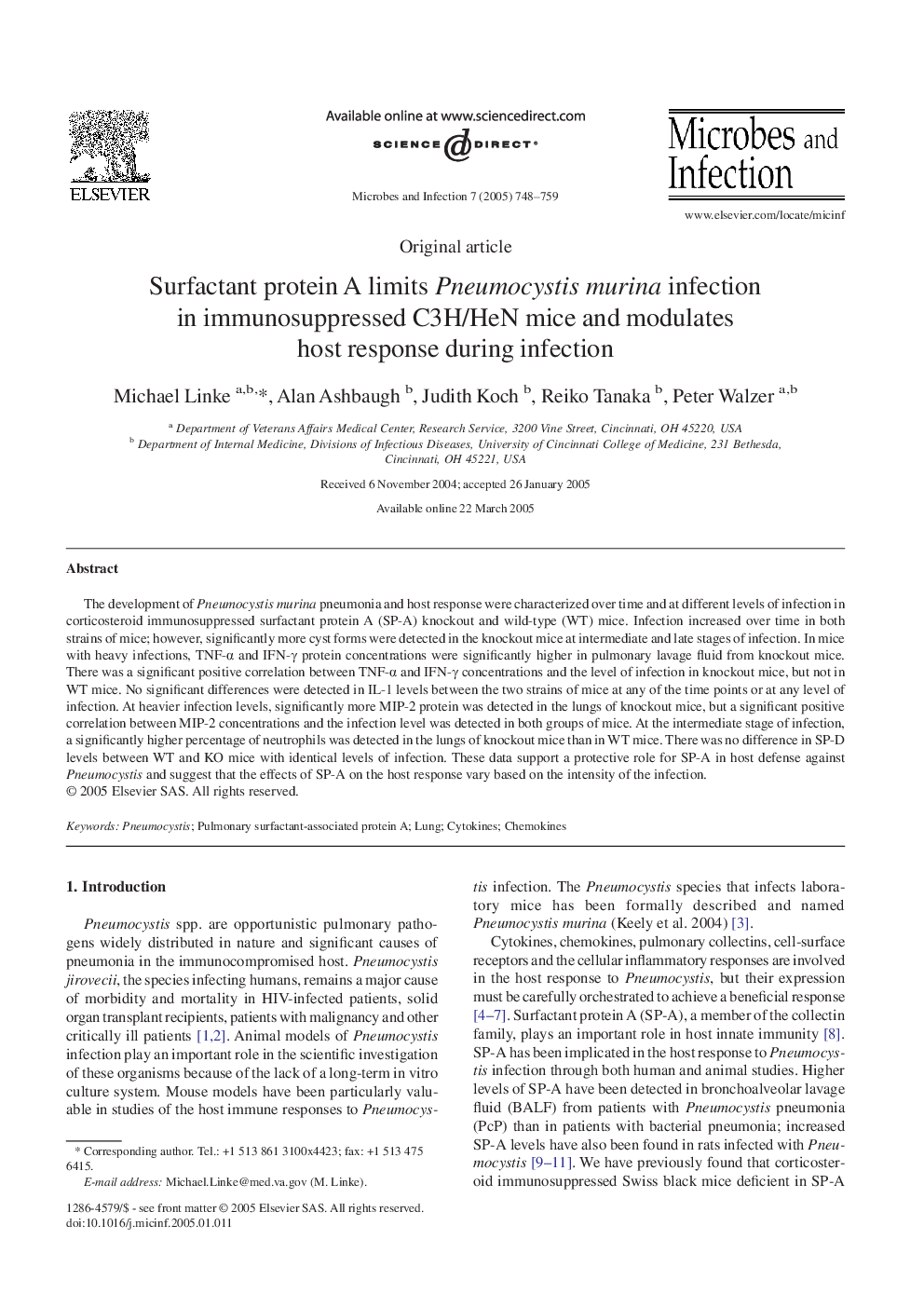| Article ID | Journal | Published Year | Pages | File Type |
|---|---|---|---|---|
| 9282953 | Microbes and Infection | 2005 | 12 Pages |
Abstract
The development of Pneumocystis murina pneumonia and host response were characterized over time and at different levels of infection in corticosteroid immunosuppressed surfactant protein A (SP-A) knockout and wild-type (WT) mice. Infection increased over time in both strains of mice; however, significantly more cyst forms were detected in the knockout mice at intermediate and late stages of infection. In mice with heavy infections, TNF-α and IFN-γ protein concentrations were significantly higher in pulmonary lavage fluid from knockout mice. There was a significant positive correlation between TNF-α and IFN-γ concentrations and the level of infection in knockout mice, but not in WT mice. No significant differences were detected in IL-1 levels between the two strains of mice at any of the time points or at any level of infection. At heavier infection levels, significantly more MIP-2 protein was detected in the lungs of knockout mice, but a significant positive correlation between MIP-2 concentrations and the infection level was detected in both groups of mice. At the intermediate stage of infection, a significantly higher percentage of neutrophils was detected in the lungs of knockout mice than in WT mice. There was no difference in SP-D levels between WT and KO mice with identical levels of infection. These data support a protective role for SP-A in host defense against Pneumocystis and suggest that the effects of SP-A on the host response vary based on the intensity of the infection.
Related Topics
Life Sciences
Immunology and Microbiology
Immunology
Authors
Michael Linke, Alan Ashbaugh, Judith Koch, Reiko Tanaka, Peter Walzer,
